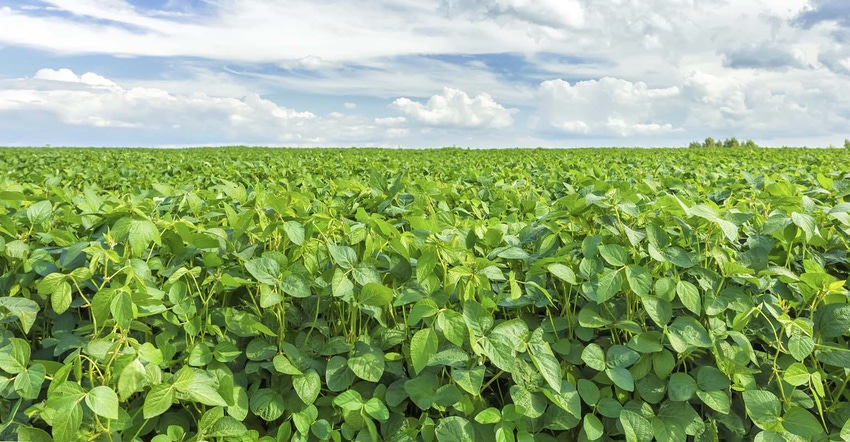November 10, 2017

The soybean cyst nematode (SCN) continues to be the most-damaging soybean pathogen in the US and Canada. The nematode is widespread in fields through Iowa and much of the Midwest. Management options for SCN include growing nonhost crops (such as corn), growing SCN-resistant soybean varieties, and using nematode-protectant seed treatments. Resistant soybean varieties have allowed farmers to produce profitable soybean yields in SCN-infested fields and keep SCN population densities relatively in check.
Many, many choices
The number of SCN-resistant soybean varieties available for Iowa soybean farmers has increased steadily since the early 1990s (see figure). Iowa State University publishes an updated list of SCN-resistant soybean varieties in maturity groups 0, 1, 2, and 3 annually to help farmers know their choices. Compilation of the list is supported by soybean checkoff funds from the Iowa Soybean Association.
The updated list has just been released, and it contains 1,002 different named varieties, which is 46 more than last year and more than ever before. There are varieties from 35 companies. Many of the varieties have resistance to the herbicides dicamba, glufosinate, and/or glyphosate, and there are some with no herbicide resistance.
Very little diversity
Although there are more than 1,000 SCN-resistant varieties on the market, almost all of the varieties (97%) have resistance genes from the same breeding line or source of resistance, namely PI 88788 (see figure). Only 29 soybean varieties in the updated list have SCN resistance genes from sources other than PI 88788; these varieties are available from nine companies and Iowa State.

Growing soybean varieties with the same SCN resistance genes each year is the same as repeatedly and consistently using a single pesticide active ingredient on a population of insects, fungi, or weeds. Eventually, the targeted pest population may develop resistance to the management tactic.
SCN populations with increased ability to reproduce on resistant varieties with PI 88788 resistance are now common in Iowa and in surrounding states. There have been fewer than 30 SCN-resistant soybean varieties available with resistance from a source other than PI 88788 for the last 12 years.
Managing SCN
Farmers should grow soybean varieties with different sources of resistance and also grow different soybean varieties of the common PI 88788 source of resistance to delay the build-up of resistance-breaking populations of SCN. Farmers also should have fields sampled to determine the levels of SCN present in the soil. A recent Iowa State Integrated Crop Management News article here has specific information on how to samples fields for SCN in the fall. More information about the biology and management of SCN is available at www.soybeancyst.info and www.soybeanresearchinfo.com/diseases/scn.html.
You May Also Like




